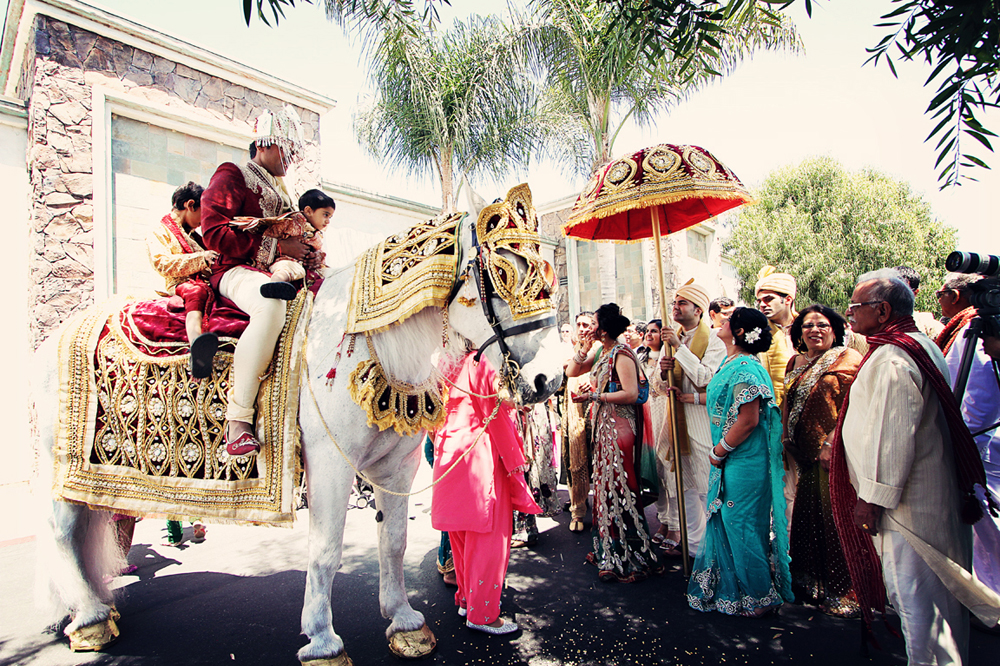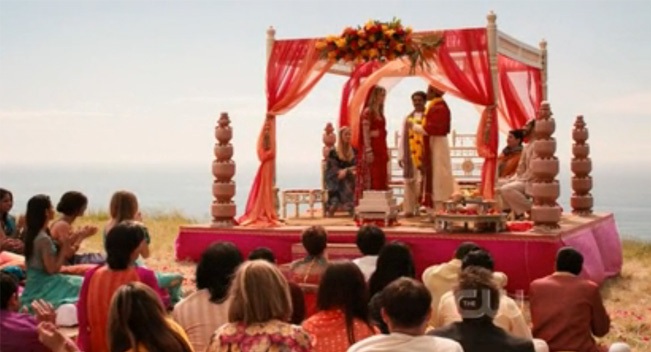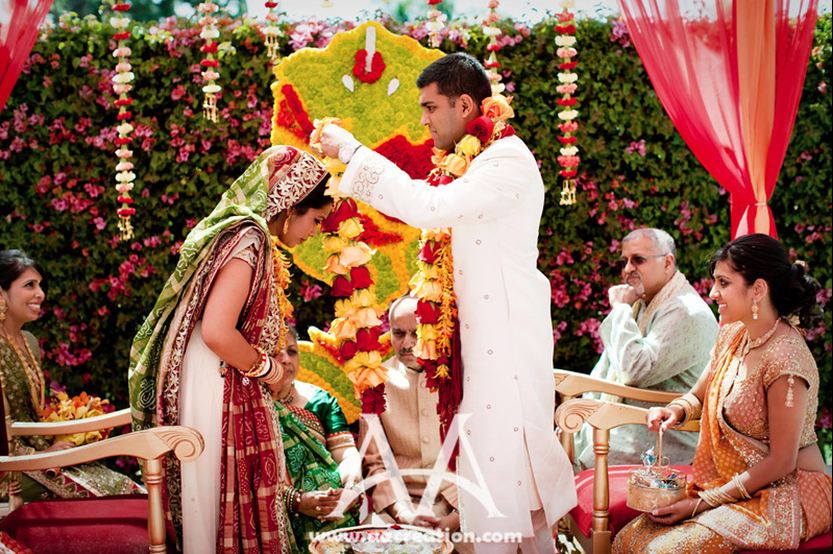Mehndi MadnessTM Blog
 Krysteen
KrysteenMarriage Ceremony - The actual wedding rituals differ between religions and regions of India. All of these ceremonies involve not only the bride and groom's bond, but the families as well. These ceremonies can take up to 5 days to complete! Usually, a reception is included at the end of these rituals.
 Baraat - This ceremony takes place the day of the wedding but is technically a pre-wedding event. Baraat is the arrival of the groom and his family to the wedding venue. The groom's family, friends, and bridal party is called the Baraati. The groom parades through the streets on a white, decorated mare with the Baraati and a band that plays joyful music throughout the journey. The groom's mother is in charge of giving the groom a colored turban and putting an optional bridal veil, called a Sehara, across his forehead before he mounts the mare. Sometimes the groom is accompanied on the mare by his younger brother or cousin, who will serve as the groom's caregiver through his journey to the venue. The bride's family pampers the groom and Baraati once they arrive to the wedding venue. The mother of the bride typically performs Aarti, a Hindu ritual, for the groom before entering the venue.
Baraat - This ceremony takes place the day of the wedding but is technically a pre-wedding event. Baraat is the arrival of the groom and his family to the wedding venue. The groom's family, friends, and bridal party is called the Baraati. The groom parades through the streets on a white, decorated mare with the Baraati and a band that plays joyful music throughout the journey. The groom's mother is in charge of giving the groom a colored turban and putting an optional bridal veil, called a Sehara, across his forehead before he mounts the mare. Sometimes the groom is accompanied on the mare by his younger brother or cousin, who will serve as the groom's caregiver through his journey to the venue. The bride's family pampers the groom and Baraati once they arrive to the wedding venue. The mother of the bride typically performs Aarti, a Hindu ritual, for the groom before entering the venue.
 Mandap - This is a traditional Indian wedding ceremony that is typically held at the bride's family's house. Modernly, Mandap takes place in a large, open space such as an outdoor garden venue, large capacity venue, or a farmhouse venue. Mandap is symbolized by having a canopy with 4 pillars of support, much like the 4 pillars of marriage and also represents both the bride and groom parents who support their marriage and the two families coming together. The canopy is decorated with red and gold drapes and decorations to symbolize prosperity.
Mandap - This is a traditional Indian wedding ceremony that is typically held at the bride's family's house. Modernly, Mandap takes place in a large, open space such as an outdoor garden venue, large capacity venue, or a farmhouse venue. Mandap is symbolized by having a canopy with 4 pillars of support, much like the 4 pillars of marriage and also represents both the bride and groom parents who support their marriage and the two families coming together. The canopy is decorated with red and gold drapes and decorations to symbolize prosperity.
 Var Mala Ceremony - Var Mala or Jai Mala, is another traditional ceremony that is represented by a large garland of flowers. Depending on the region of India, the garland will vary in length and type of flower used. For example, in Southern India garlands are very long and heavy, compared to North India. Traditionally red roses are used, other options are orchids, carnations, and many others. After Baraat, the groom is taken to an elevated stage. The bride then enters the venue with her sisters and friends and takes her place on stage next to the groom. They then exchange their garlands, for laughs, the Baraati lift the groom up in the air to prevent the bride from putting her garland on him. The bride's friends then lift her up so that she can get to the groom and put the garland around his neck, the same happens when it is the groom's turn to put the garland on the bride. The Var Mala ceremony signifies the acceptance of the bride and groom into each other's lives.
Var Mala Ceremony - Var Mala or Jai Mala, is another traditional ceremony that is represented by a large garland of flowers. Depending on the region of India, the garland will vary in length and type of flower used. For example, in Southern India garlands are very long and heavy, compared to North India. Traditionally red roses are used, other options are orchids, carnations, and many others. After Baraat, the groom is taken to an elevated stage. The bride then enters the venue with her sisters and friends and takes her place on stage next to the groom. They then exchange their garlands, for laughs, the Baraati lift the groom up in the air to prevent the bride from putting her garland on him. The bride's friends then lift her up so that she can get to the groom and put the garland around his neck, the same happens when it is the groom's turn to put the garland on the bride. The Var Mala ceremony signifies the acceptance of the bride and groom into each other's lives.
